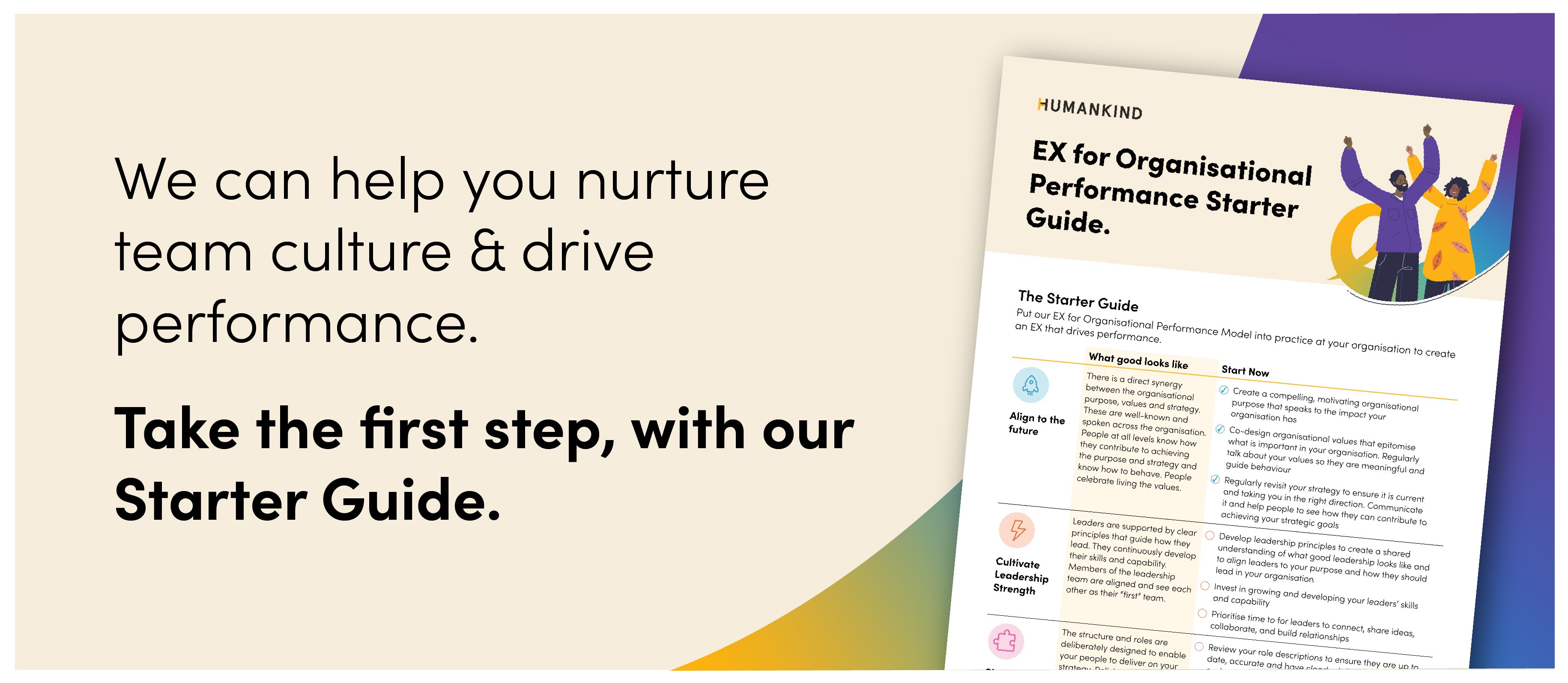Align your Team to the future.
When your team is aligned to the future everyone is rowing in the same direction – to the same destination. Your team are motivated by what your company exists to achieve, and their opportunity to work towards that goal. They know what is expected of them, in terms of delivering the strategy, and how they are expected to conduct themselves.
Like most organisations, Sarah had articulated an organisational purpose. Sarah and her leaders spoke about their purpose regularly to motivate their employees and attract talent to the company.
The company also had values, however they had posters on the office walls and they seemed to be forgotten about. Leaders were not discussing these values with the team, and meetings were focused on results - not behaviour.
Sarah’s company had an outdated strategy in place. It had been set three years ago, just after the first Covid lockdown, and hadn’t been revisited despite the changing economic climate. Because it was out of date, they didn’t talk about the strategy with their teams.
We supported Sarah to co-design refreshed values, and worked with her people on how to bring them to life in team meetings and their day-to-day work. We encouraged Sarah and the leadership team to revisit their strategy and articulate how every role contributes to achieving it, and brings their company’s purpose to life.
Cultivate Leadership strength.
Leadership has the biggest impact on EX. Leadership strength comes from knowing what good leadership looks like, creating strong relationships and alignment across your leaders and investing in the development of your team’s leadership skills and capabilities.
Sarah had some leaders who were great technical experts promoted into people leadership roles, but were feeling unprepared and unsure how to tackle the transition to the leadership space.
The laser focus on performance meant leaders weren’t carving out necessary time to connect with and challenge each other, or build trusted relationships.
We determined the most critical thing to start with was for the Leadership team to schedule some time to get to know each other better as people. The impact was seen immediately in their increased trust in one another, respect, and understanding of their working styles. Next, we designed a set of leadership principles to create a common understanding of what it means to be a leader at their company. Together we determined the next step for the company will be to invest in a leadership development programme – Sarah hopes to do this in the next financial year.
Shape your Organisation.
Shaping your organisation is about having the right people in the right roles, so they can perform to the best of their ability and make the biggest impact in your organisation. Deliberately designing structures and roles, as well as policies and frameworks will enhance clarity and connection, reduce conflict, and enable smoother collaboration across your teams. Having these structures in place will equip your organisation to respond swiftly to challenges, adapt to market shifts, and seize upcoming opportunities.
Unfortunately, restructures are the harsh reality for many companies at the moment, and Sarah’s was no exception. We discovered opportunities beyond downsizing, for her company to optimise their structure and roles to ensure her people had the clarity they needed to perform well and collaborate together. Next, we looked at updating their decision making process to better empower their team leaders to make decisions. These changes meant their teams were able to perform better than before.
Embed better ways of working.
Ways of working are about how people work - the team rhythms and rituals, how information is shared, and how the team collaborates and connects together. Often, ways of working are left to chance, but when deliberately designed they can enable and empower people to work efficiently and effectively every day. Flexibility also fits within this pillar – whether your organisation allows remote working, how you operate with dispersed teams, and whether you have days when your people are required to be in the office.
In response to Covid, Sarah’s company introduced the option for their employees to work remotely, and this developed organically in various teams during the following years. However, the resulting lack of consistency between different teams’ abilities to work flexibly was driving resentment. Some teams were required to be in-office on certain days, whereas others could choose where to work on any given day.
When the team did come into the office, they would often spend their time on video calls, rather than collaborating and connecting in person. A few simple changes to their remote working policy and practices resulted in the company taking a more deliberate and consistent approach to allowing flexibility, and designing the in-office days to maximise in-person connection.
We worked with the team to refresh the structure of their regular meetings - the focus on performance alone was becoming demoralising for the team. Adding in time to connect and including an opportunity to celebrate wins and examples of their team displaying the company’s values made the meetings more uplifting and energising. The boost to morale was felt immediately.
There is still a long way to go for Sarah’s company. She recognises she can’t do it all at once, but with a continued and consistent focus on EX, her company will achieve sustained organisational performance. The fact that they are seeing results already is a testament to the ability to have both – a great EX and great performance.
How to start
We know that organisations with the EX factor are those that continuously focus on these four pillars. In doing this, they create better employee experiences for their people and are more likely to meet their strategic goals. Our EX for Organisational Performance Model is the blueprint for a brighter future - where thriving employees and smashing performance targets go hand-in-hand. Check out our EX for Organisational Performance Starter Guide for tips on where to start across each of the pillars.


